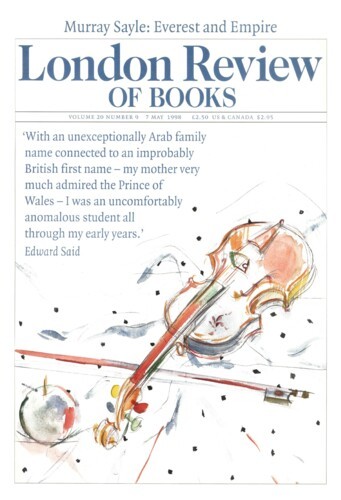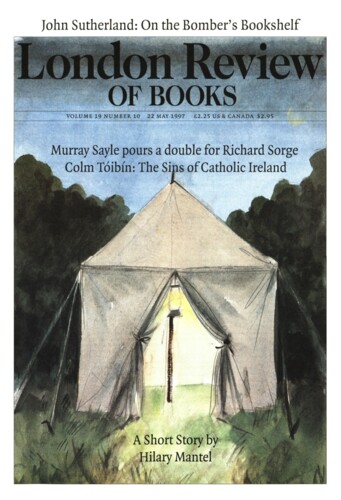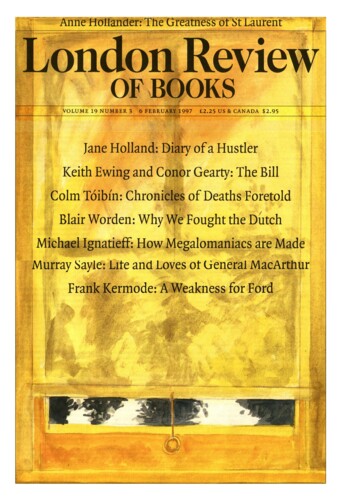The Vulgarity of Success: Everest and Empire
Murray Sayle, 7 May 1998
The one line that everybody knows about why people climb mountains was spoken on a wet night in New York, 17 March 1923. The tall, lean and theatrically handsome George Mallory, clergyman’s son, Winchester and Magdalen College, Oxford, artillery officer on the Western Front, faultless husband and devoted father of three, was on a lecture tour, trying to raise money for the forthcoming all-British attempt (his third) on Mount Everest. Mallory had given his lecture many times. At its end, regularly as snow falls on the Himalaya, someone would get up and ask: ‘But Mr Mallory, why are you trying to climb Mount Everest?’ Mallory had an answer as clean-cut as himself at the ready: ‘We hope to show that the spirit that built the British Empire is not yet dead, coupled with the name of the Joint Himalayan Committee of the Alpine Club and Royal Geographical Society.’ This usually brought polite applause and sometimes a few extra dollars. Like the British, Americans have tended to think of Everest as in some way British, although its summit ridge is the border between Nepal and Tibet, and neither was ever part of the British Empire. Perhaps the name ‘Everest’, suggesting eternal slumber, seems both British and appropriate. Neither the mountain’s Tibetan name, Chomolungma (‘goddess mother of the snows’), nor the Nepali Sagarmatha, preferred by Sir George Everest, Surveyor-General of India 1830-43, has caught on. At least we have been spared the name of Sir George’s successor, Andrew Waugh, who calculated that Everest, at 29,028 feet and still putting on an inch or so a year, is by a good margin the world’s highest mountain.’‘




